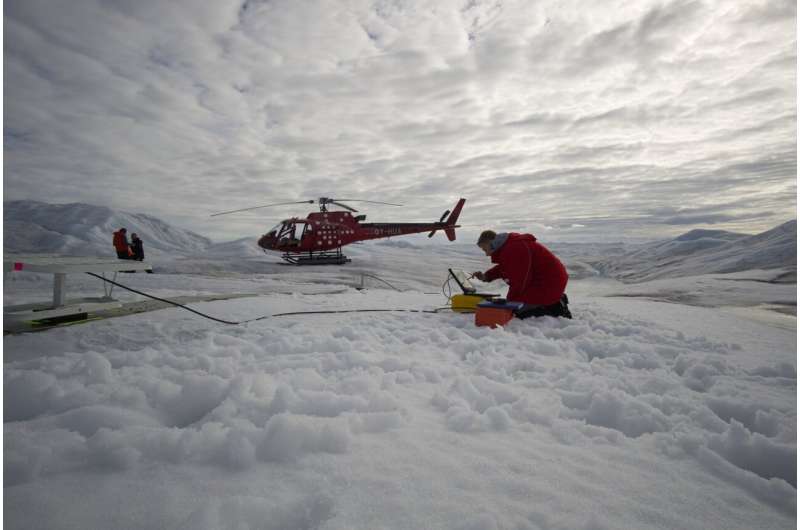Ground-based measuring devices and aircraft radar operated in the far northeast of Greenland show how much ice the 79° N-Glacier is losing. According to measurements conducted by the Alfred Wegener Institute, the thickness of the glacier has decreased by more than 160 meters since 1998. Warm ocean water flowing under the glacier tongue is melting the ice from below.
High air temperatures cause lakes to form on the surface, whose water flows through considerable channels in the ice into the ocean. One channel reached a height of 500 meters, while the ice above was only 190 meters thick.
Due to extreme melt rates, the ice of the floating glacier tongue has become 32 % thinner since 1998, especially from the grounding line where the ice comes into contact with the ocean. In addition, a 500-meter-high channel has formed on the underside of the ice, which spreads towards the inland. Read More
News Credit: Phys.org
Image: Ole Zeising starting pRES (radar) measurement on 79 North Glacier. Credit: Alfred-Wegener-Institut / Niklas Neckel



